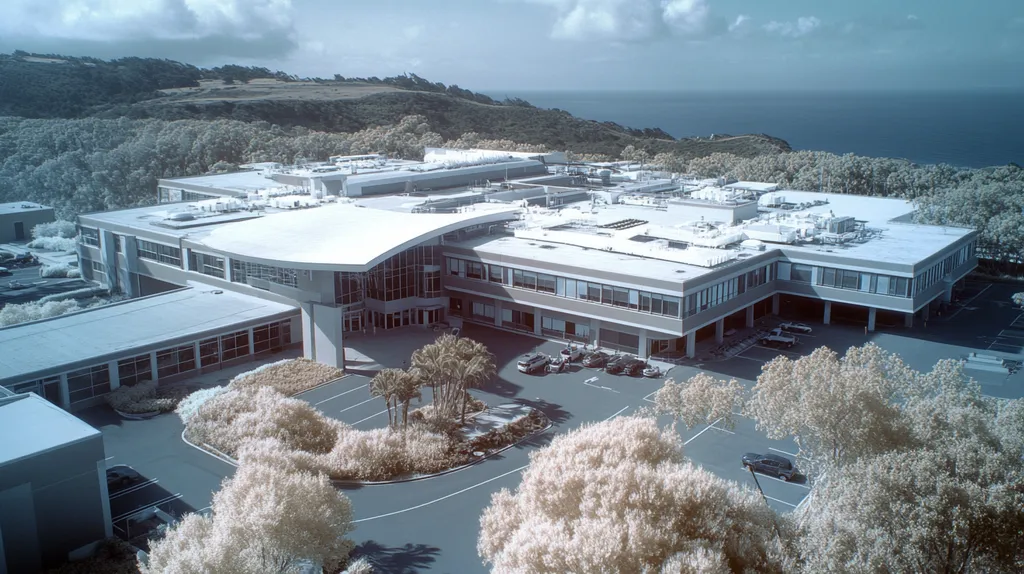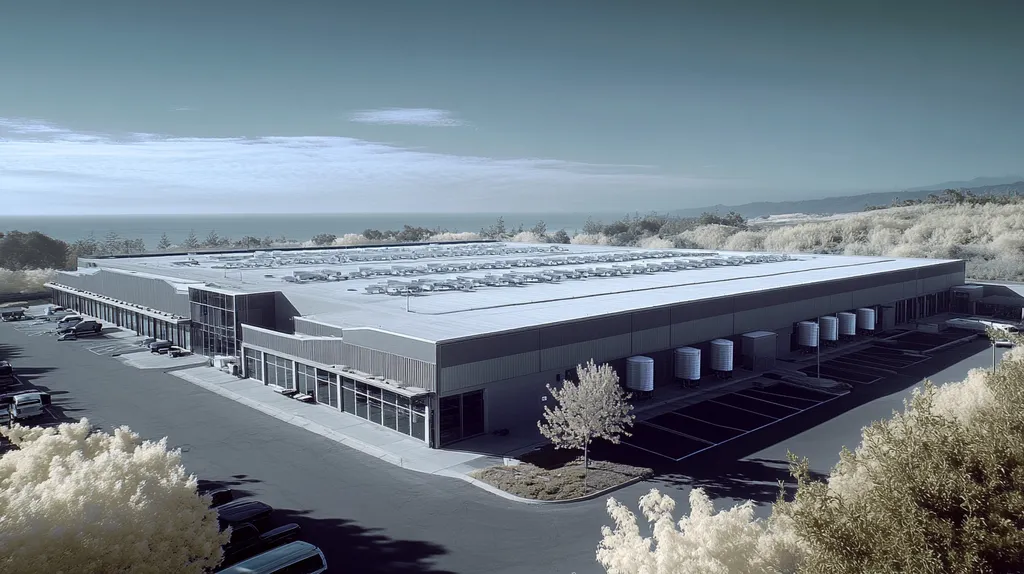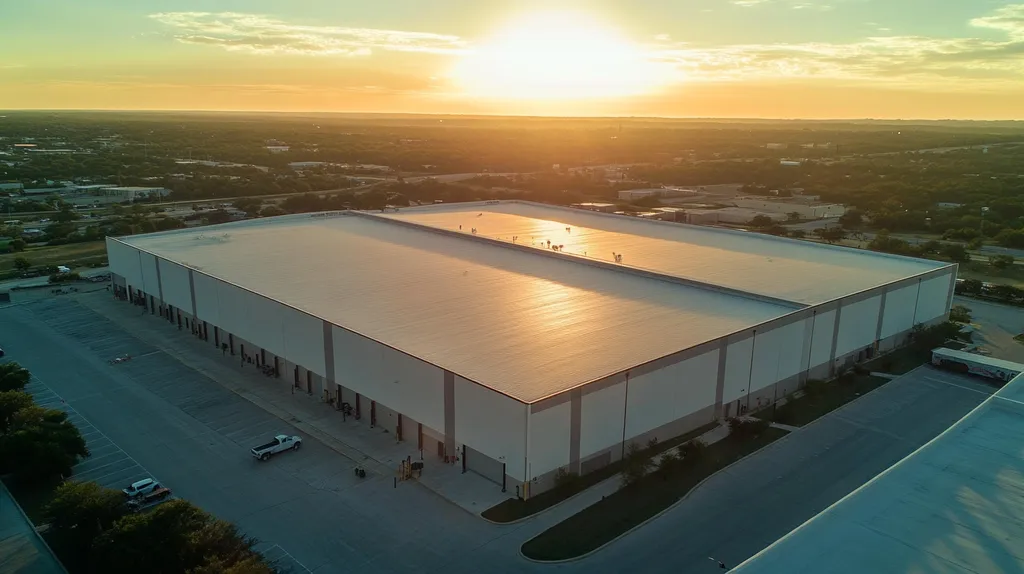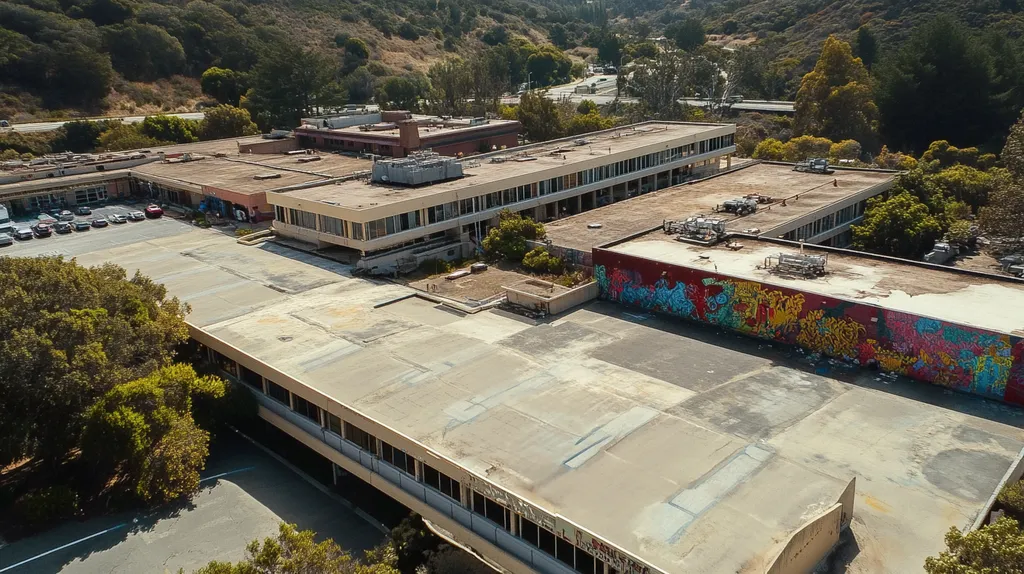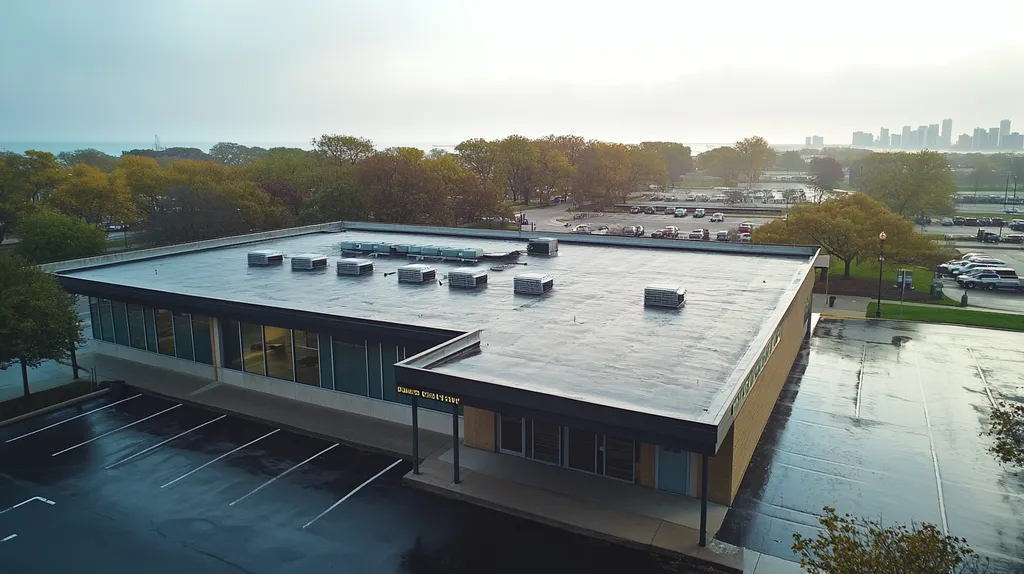Commercial property owners face mounting pressure to optimize roof performance as energy costs surge and extreme weather events intensify. Research shows that smart roof technologies can reduce energy consumption by up to 30% while preventing catastrophic failures that cost facilities over $1 million in damages.
Yet many properties continue operating with outdated roofing systems, missing opportunities for substantial cost savings and risk reduction. The integration of sensors, automated monitoring, and predictive analytics has become essential for maintaining competitive advantage.
This comprehensive guide examines critical factors in smart roof optimization, from performance monitoring and financial considerations to compliance requirements and operational protocols. Property professionals will discover actionable strategies for leveraging roofing technology to protect assets and maximize returns.
SECTION 1: PERFORMANCE FACTORS
As the pressures of rising energy costs and extreme weather events ramp up, the functionality of roofing systems is more crucial than ever. Research shows that roofs can contribute to as much as 20% of a building’s overall energy usage. To maintain a competitive edge, property owners and facility managers must harness smart roofing technologies. Key performance factors—real-time monitoring, energy efficiency, and durability against harsh weather—demand immediate focus and strategic investment.
Real-Time Monitoring and Sensor Integration
Integrating real-time monitoring and sensor technology is vital for proactive roof management. These innovative systems continuously assess roof conditions, detecting everything from moisture levels to temperature shifts. For example, early leak detection can prevent extensive water damage, ultimately minimizing repair costs.
Moreover, real-time data empowers property managers to adapt building operations in response to changing weather conditions. This capability optimizes ventilation systems, enhancing occupant comfort while driving energy savings. By leveraging this technology, facility managers can make informed, data-driven decisions.
Additionally, sensor integration can revolutionize maintenance scheduling. Instead of waiting for problems to arise, roofing professionals can be deployed strategically as issues are identified. This proactive approach helps reduce operational costs and extends the roof’s lifecycle.
Key Action Items
Energy Efficiency and Thermal Regulation
Energy efficiency and effective thermal regulation are essential for commercial roofs. Buildings with inadequate thermal management can experience higher energy costs and reduced occupant comfort. By adopting smart roof technologies, property managers can significantly improve insulation and decrease energy consumption.
For instance, reflective roofing materials can effectively reduce heat absorption, decreasing reliance on air conditioning during hot months. This not only lowers energy expenses but also supports sustainability efforts. As demand for greener buildings rises, energy-efficient roofs become increasingly attractive to eco-conscious tenants.
Advanced energy management systems can also adjust energy use based on real-time weather forecasts. Utilizing predictive analytics enables managers to optimize energy loads, promoting resource efficiency while minimizing carbon footprints.
Key Action Items
Durability Against Weather Extremes
The significance of extreme weather events on roofing systems is a pressing concern. As climate change brings about more frequent severe storms, roofs must be engineered to endure harsh conditions, making durability a top priority. Properties situated in areas vulnerable to snow accumulation, hail, or high winds require robust roofing solutions.
Utilizing advanced materials such as modified bitumen and thermoplastic membranes enhances resilience to temperature extremes and adverse weather. Selecting appropriate materials can avert costly damages while prolonging the life of the roof. For example, roofs designed for high wind resistance effectively minimize the risk of catastrophic failures during storms.
Furthermore, a strong roofing system can lower insurance costs. Insurers typically offer reduced premiums for buildings equipped with durable roofs, as these have a lower likelihood of damage. This not only safeguards financial interests but also strengthens risk management strategies.
Key Action Items
SECTION 2: FINANCIAL CONSIDERATIONS
Smart roof technology is not just a passing trend; it represents a vital evolution for commercial property owners and facility managers. Neglecting these advancements can lead to wasted resources and mounting financial losses. For instance, properties lacking energy-efficient roofing can face up to 30% higher energy costs each year. This section delves into the financial aspects of smart roofing systems, covering costs, budgeting, and the potential for significant energy savings.
Cost-Benefit Analysis of Smart Roof Investments
Understanding the financial outlay associated with smart roofs is crucial for informed decision-making. Although initial investments can appear substantial—typically 15% to 30% higher than traditional roofs—the long-term benefits often outweigh these costs.
A thorough cost-benefit analysis should look beyond immediate expenses to include future savings. Reduced energy usage and lower maintenance costs can recoup initial investments within a few years. Property owners should consider both the visible advantages, like lower bills, and less obvious benefits, such as increased property value.
Investments in smart roofs not only yield savings but also attract higher rents and quality tenants. In today’s market, where sustainability is increasingly valued, smart roofs offer a clear commitment to environmental responsibility.
Key Action Items
Budgeting for Installation and Maintenance
Effective budgeting for smart roofing installation requires careful planning. Decision-makers must factor in not just the initial installation costs but also the expenses related to ongoing maintenance. Smart roofs often include sensors and monitoring systems that may need specialized upkeep.
It is wise for property owners to set aside a portion of the operational budget specifically for roofing technology, covering potential repairs and upgrades. This foresight can help prevent financial strain and ensure the roof performs optimally over its lifetime.
Moreover, exploring financing options can greatly help ease initial costs. Many suppliers offer attractive financing plans or rebates for energy-efficient upgrades, making it easier for property managers to implement these technologies.
Key Action Items
Return on Investment through Energy Savings
The primary financial benefit of smart roofs is the return on investment (ROI) from energy savings. A well-installed smart roof can cut energy consumption by as much as 35%, resulting in significantly reduced utility bills. For facility managers, this leads to more predictable operating expenses.
To accurately measure these savings, property owners should track energy metrics before and after installation. Implementing energy management software can help quantify savings and improve financial forecasting.
Additionally, many utility companies offer incentives for energy-saving upgrades. These incentives can further enhance ROI, positioning smart roofs as not only an environmentally friendly choice but also a financially astute one.
In summary, highlighting the return on investment from energy savings helps to frame smart roofing systems as a financially sound decision, encouraging property professionals to embrace these innovative solutions for sustained success.
Key Action Items
SECTION 3: COMPLIANCE REQUIREMENTS
Staying compliant with regulations is essential for effective management of commercial roofing systems. Failing to adhere to local building and energy codes can result in steep penalties and dangerous situations. For instance, outdated roof designs that don’t meet energy efficiency standards may lead to spiraling operational costs and compliance headaches. This section highlights key compliance requirements, focusing on building codes, safety regulations, and the significance of proper documentation.
Meeting Local Building and Energy Codes
Local building codes establish the foundational standards necessary to ensure safety and efficiency in roofing systems. When property owners install or upgrade commercial roofs, they must familiarize themselves with regulations that vary by jurisdiction. Some areas require energy-efficient materials, while others mandate specific design features to enhance structural integrity.
Energy codes cover a wide range of factors, including insulation quality and overall design impact on energy consumption. Non-compliance with these codes can lead to hefty fines and may necessitate expensive retrofitting work. Staying informed about these evolving codes is critical for maintaining a compliant and energy-efficient property.
Incorporating smart technology into roofing systems can help optimize compliance with these standards. For example, innovative monitoring solutions like the SikaRoof® Monitoring System provide real-time performance data, ensuring energy efficiency standards are met consistently (source: Sika Group).
Key Action Items
Adhering to Safety and Fire Regulations
Safety regulations are crucial for both the installation and upkeep of commercial roofing systems. These standards aim to mitigate risks associated with roof collapses, falls, and fire hazards. For instance, it is vital that roofs can support additional weight from equipment and personnel effectively.
When selecting roofing materials, compliance with fire regulations is imperative. Materials must be rated for fire resistance to prevent severe losses. Ignoring these regulations can create unsafe environments and lead to increased insurance costs.
Property managers must ensure that roofing contractors are well-versed in all relevant safety regulations. Consistent training and safety updates are essential for fostering a secure work atmosphere. Smart roofing technologies can support compliance by continuously monitoring roof conditions, providing alerts about potential safety concerns.
Key Action Items
Documentation and Reporting for Inspections
Comprehensive documentation is essential for satisfying compliance requirements. This includes maintaining records of materials used, installation practices, and any inspections completed. Properly documenting these aspects ensures property owners can easily demonstrate compliance during inspections.
Routine inspections are equally important. They help identify potential issues early, ensuring ongoing compliance with safety and building codes. Adhering to a regular inspection schedule can contribute to longer roof lifespans and improved overall performance.
Smart roofing technologies can enhance documentation by automating data collection. For instance, advanced systems can continuously record temperature and moisture levels, maintaining a detailed history of roof performance. Property managers must prioritize meticulous record-keeping to fulfill regulations and showcase proactive management strategies.
Key Action Items
SECTION 4: RISK MANAGEMENT
Effective risk management is essential for protecting the integrity of commercial roofs. Alarmingly, research indicates that 25% of all commercial roofing claims stem from undetected leaks. The potential financial repercussions of water damage and structural issues emphasize the need for smart roofing technologies. By adopting these tools, property managers can enhance early detection, streamline maintenance processes, and influence insurance costs significantly.
Early Detection of Roof Damage and Leaks
Smart roofing systems offer robust monitoring capabilities to identify leaks and damage before issues escalate. Utilizing sensors, these systems continuously track moisture levels and temperature changes, alerting facility managers when irregularities are detected. This proactive strategy drastically reduces response times and minimizes the risk of costly infrastructure repairs.
In traditional roofing approaches, leaks often remain unnoticed until they cause extensive damage. This results in higher repair costs and may disrupt business operations. Smart technology mitigates these risks by providing immediate insights and facilitating timely intervention.
Additionally, early detection contributes to a longer roof lifespan. Property managers can address minor issues swiftly, preventing major repairs or replacements and leading to substantial long-term savings. Furthermore, integrating machine learning allows these systems to utilize historical data and weather patterns to predict potential risks, enabling proactive preparations for adverse conditions.
Key Action Items
Preventative Maintenance Scheduling
Smart roofing technology plays a vital role in developing effective preventative maintenance schedules. By analyzing performance data, these systems recommend the best times for maintenance tasks, enabling property managers to avoid unnecessary interventions. This data-driven approach ensures roofs receive attention when needed, warding off degradation over time.
Regular maintenance led by smart technology not only enhances roof performance but also optimizes budget allocations. Efficient resource management minimizes waste and ensures funding is directed to the most impactful tasks, leading to increased property valuation.
Moreover, fostering a culture of preventative maintenance assures stakeholders—including tenants and investors—of the building’s integrity. When routine checks are easily scheduled, this promotes confidence in the property’s management and security. This also supports compliance with building codes and insurance requirements by providing documentation of maintenance adherence.
Key Action Items
Insurance Implications of Smart Roofing Systems
Integrating smart technology into roofing solutions significantly impacts insurance considerations. Insurers increasingly acknowledge the advantages of advanced monitoring systems. Buildings equipped with these technologies may qualify for lowered premiums due to enhanced risk profiles.
Insurance companies view properties with proactive risk management strategies as less likely to incur significant claims, often leading to more favorable terms for owners who invest in smart roofing. This financial incentive encourages property managers to prioritize technology integration.
Additionally, smart roofing systems can simplify the claims process. Real-time data documenting damages expedites claims validation, reducing dispute times and alleviating stress during insurance claims. It is vital for property professionals to discuss their smart roofing capabilities with insurers, ensuring a strong position in negotiations and claims.
Key Action Items
SECTION 5: OPERATIONAL PROCEDURES
Implementing effective operational procedures is essential for maximizing smart roof technology’s benefits. Poor monitoring and management can lead to significant financial losses; for instance, premature roof failures can cost large facilities up to $1 million. This section focuses on critical components including monitoring protocols, staff training, and data management methods to ensure optimal roof performance.
Implementing Smart Roof Monitoring Protocols
Establishing robust monitoring protocols is fundamental for proactive roof management. Regular assessments using advanced technologies can pinpoint issues like leaks or thermal inefficiencies before they escalate. For example, utilizing thermal imaging cameras allows facilities to identify areas losing heat early on.
Integrating Internet of Things (IoT) sensors provides real-time data that enables timely interventions. This data-driven approach minimizes reactive maintenance, ultimately saving time and money while extending the lifespan of roofing systems. Consistent smart monitoring plays a key role in lowering operating costs.
It is critical to schedule routine assessments in combination with smart monitoring notifications. Implementing these protocols fosters accountability and emphasizes preventive measures. Regular reviews will ensure potential problems are addressed swiftly before affecting facility operations.
Cloud-based monitoring solutions simplify this process, allowing property owners to access performance data remotely. This accessibility empowers facility managers to make informed and timely decisions based on real-time data insights.
Key Action Items
Staff Training and Responsibilities
Training staff on smart roof technology is critical for ensuring maximum system effectiveness. Even the most advanced technologies can fall short without proper understanding and skills from users. Establishing a comprehensive training program equips staff to manage and operate new systems confidently.
All relevant personnel must be familiar with monitoring systems, including alert readings and how to interpret data. Facility managers can utilize training sessions to foster a culture of proactive maintenance, enhancing the overall performance of the roofing system.
Assigning specific roles promotes accountability; designating a “roof manager” creates a focal point for all roof-related matters. This individual should be trained to use smart technologies efficiently and to monitor the roof’s health critically.
Ongoing education keeps the staff updated on trends and practices in roofing technology. Participating in industry workshops or seminars can further enrich knowledge, allowing for adaptable operational procedures in line with evolving technologies.
Key Action Items
Data Management and Analysis Workflows
Effective data management is vital for generating actionable insights. Gathering data from smart roof technologies is only part of the equation; analyzing this data is crucial for transforming it into meaningful information. Establishing an organized workflow for data collection, storage, and analysis is essential.
Utilizing predictive analytics helps identify trends and forecast potential issues. For instance, recognizing recurring problems can lead to proactive long-term solutions, improving overall building efficiency. A structured approach ensures that data is not merely collected, but actively applied.
Data visualization tools can further aid understanding by presenting complex information in accessible formats. Dashboards can facilitate quick assessments of roof performance metrics, enabling managers to make informed decisions swiftly.
Compliance with regulations regarding data management is paramount. Adhering to industry guidelines reduces risks and builds trust with stakeholders, making sound data management practices integral to operational success.
Key Action Items
SECTION 5: OPERATIONAL PROCEDURES
Implementing effective operational procedures is essential for maximizing the benefits of smart roof technology. Inadequate monitoring and management can lead to significant financial losses; for instance, premature roof failures can cost large facilities up to $1 million. This section highlights critical components like establishing monitoring protocols, training staff on new technologies, and implementing robust data management methods.
Implementing Smart Roof Monitoring Protocols
Monitoring protocols are vital for proactive roof management. Regular assessments using smart technology can identify issues like leaks or thermal inefficiencies before they escalate. For example, facilities equipped with thermal imaging cameras can detect areas of heat loss early, preventing larger issues down the line.
Integrating IoT sensors can provide real-time data, enabling timely interventions. This data-driven approach minimizes reactive maintenance, saving both time and money. With consistent smart monitoring, properties can lower operating costs and extend their roofing systems’ lifespan.
Establishing routine assessments alongside smart monitoring alerts is essential. These protocols foster accountability and emphasize preventive actions, ensuring that potential issues are addressed promptly before they impact facility operations.
Cloud-based monitoring solutions can also streamline this process. Property owners can access performance reports remotely, facilitating informed decision-making. Access to real-time data empowers facility managers to act swiftly when required.
Key Action Items
Staff Training and Responsibilities
Training staff on smart roof technology is crucial for ensuring maximum system effectiveness. Without proper training, even the most advanced systems can underperform. A comprehensive training program helps staff understand the technology and their roles in managing it efficiently.
All relevant personnel should be aware of how to operate monitoring systems, including understanding alerts and data interpretation. Facility managers can leverage training sessions to cultivate a culture of proactive maintenance, enhancing the overall performance of the roofing system.
Assigning specific responsibilities fosters accountability. Designating a “roof manager” creates a central point of contact for addressing all roof-related concerns. This individual should be trained to utilize smart technology effectively to monitor roof health.
Ongoing education ensures staff remains updated on the latest trends and practices. Engaging with industry seminars or workshops can enhance knowledge and adapt operational procedures in line with evolving technologies.
Key Action Items
Data Management and Analysis Workflows
Effective data management is fundamental for generating actionable insights. Collecting data from smart roof technologies is just part of the challenge; analyzing this data transforms it into valuable information. An organized workflow should be established for data collection, storage, and analysis.
Utilizing predictive analytics helps identify patterns and forecast potential issues. Recognizing recurring problems can lead to long-term solutions, mitigating significant impacts on building efficiency. A systematic approach ensures that data is actively applied, rather than merely collected.
Data visualization tools can enhance understanding by converting complex information into accessible formats. Dashboards can facilitate quick assessments of roof performance metrics, enabling managers to make informed decisions swiftly.
Compliance with regulations regarding data management is paramount. Adhering to industry guidelines reduces risks and builds trust with stakeholders. Effective data management practices can serve as a pivotal point in achieving operational success.
Key Action Items
The Bottom Line
Smart roof technology has become essential for commercial property survival, with research showing potential energy savings of 30% and protection against catastrophic failures that can exceed $1 million in damages.
Properties operating without smart monitoring systems face escalating risks from extreme weather events, rising energy costs, and regulatory non-compliance.
The integration of sensors, predictive analytics, and automated monitoring provides property managers with unprecedented control over roof performance and maintenance scheduling.
As climate challenges intensify and energy costs surge, smart roof technologies represent more than an operational advantage – they are becoming a critical requirement for maintaining competitive property values and ensuring long-term facility viability.
The time for strategic investment in smart roofing solutions is now, as delays in implementation directly impact bottom-line performance and asset protection.
FREQUENTLY ASKED QUESTIONS
Q. What performance factors are crucial for commercial roofs?
A. Key factors include real-time monitoring, energy efficiency, and durability against severe weather events. These aspects ensure optimal roof performance and can lead to significant cost savings and prolonged roof lifespan.
Q. How can financial considerations impact industrial roof decisions?
A. Financial decisions influence the choice of materials and technologies, impacting long-term savings. Analyzing costs, possible energy savings, and property value enhancements are critical for making informed investments in roofing systems.
Q. What compliance requirements should be considered for commercial roofs?
A. Safety codes and local building regulations must be followed, including energy efficiency standards and proper documentation. Staying current with these requirements helps avoid penalties and maintain roof longevity.
Q. How can smart roofs enhance risk management for commercial properties?
A. Smart roofs provide early detection of potential issues, allowing for swift action and reducing repair costs. Implementing robust monitoring helps minimize risks associated with leaks and structural integrity.
Q. What operational procedures are necessary for managing smart roofs?
A. Effective procedures include establishing monitoring protocols, training staff, and implementing data management practices. These elements ensure that smart roofs are utilized to their fullest potential, enhancing overall building performance.
Q. How can environmental factors affect commercial roof performance?
A. Environmental conditions like temperature changes, precipitation, and wind patterns can significantly impact roofing materials. Choosing resistant materials and implementing effective monitoring can help mitigate these risks and enhance durability.
Q. What are the benefits of training staff on smart roof technology?
A. Proper training ensures staff can effectively manage and maintain smart technologies, fostering a culture of proactive management. This can lead to improved efficiency and performance of the roofing system.

